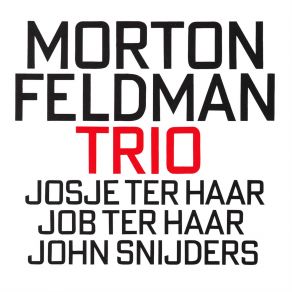Morton Feldman: Trio
Download links and information about Morton Feldman: Trio by John Snijders, Josje Ter Haar, Job Ter Haar. This album was released in 1997 and it belongs to Classical genres. It contains 4 tracks with total duration of 01:16:00 minutes.

|
|
|---|---|
| Artist: | John Snijders, Josje Ter Haar, Job Ter Haar |
| Release date: | 1997 |
| Genre: | Classical |
| Tracks: | 4 |
| Duration: | 01:16:00 |
| Buy it NOW at: | |
| Buy on iTunes $9.99 | |
Tracks
[Edit]| No. | Title | Length |
|---|---|---|
| 1. | Trio (1980): Part 1 | 19:15 |
| 2. | Trio (1980): Part 2 | 16:01 |
| 3. | Trio (1980): Part 3 | 16:48 |
| 4. | Trio (1980): Part 4 | 23:56 |
Details
[Edit]What is perhaps most striking about Morton Feldman's quiet, wandering music is how distinctly ambiguous it is. No images or emotions are conjured up from particularly constructed places in the score. His scores — and this one specifically, his "Trio" of 1980, played gorgeously by these members of the Ives Ensemble — are about the relationships among notes, instruments, and spaces. They are, as this piece illustrates so wonderfully, investigations of the possible, and they are written without hope or expectation for resolve or desire. The quiet (Feldman's works are meant to be played back on the stereo at a level just above that of silence), meandering spaces incorporated in the work make each phrase carry its own weight against another. When, in the opening, all three instruments play separate phrases together for merely a couple of seconds, that investigation is clearly under way. Timbre and pitch, without question, take precedence over harmony. In fact, it can be argued that Feldman was not only unconcerned with harmony, but that he was trying to do away with it and melody altogether — and pretty much succeeded. The "Trio" is imperfect in this way, much to the satisfaction of its composer. It carries the listener inside a precisely constructed sound world where one can roam very freely, touching upon whatever appears, either as relationship or personal reflection, and then gently slide through to whatever is next until, at the end, the only reverberation — which feels a part of the work itself — is silence.